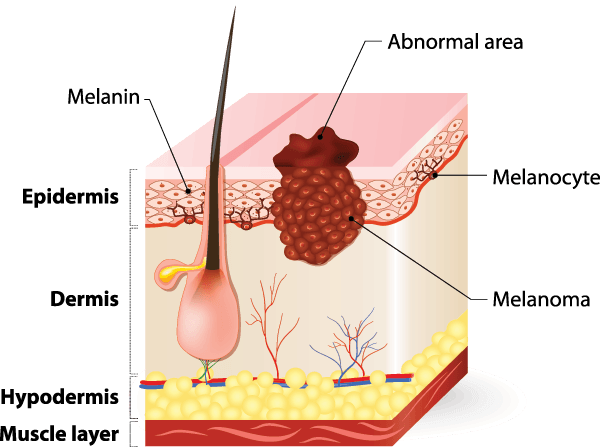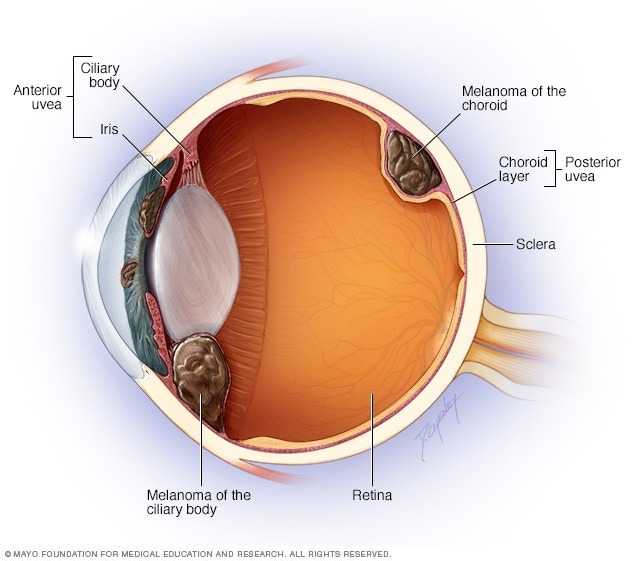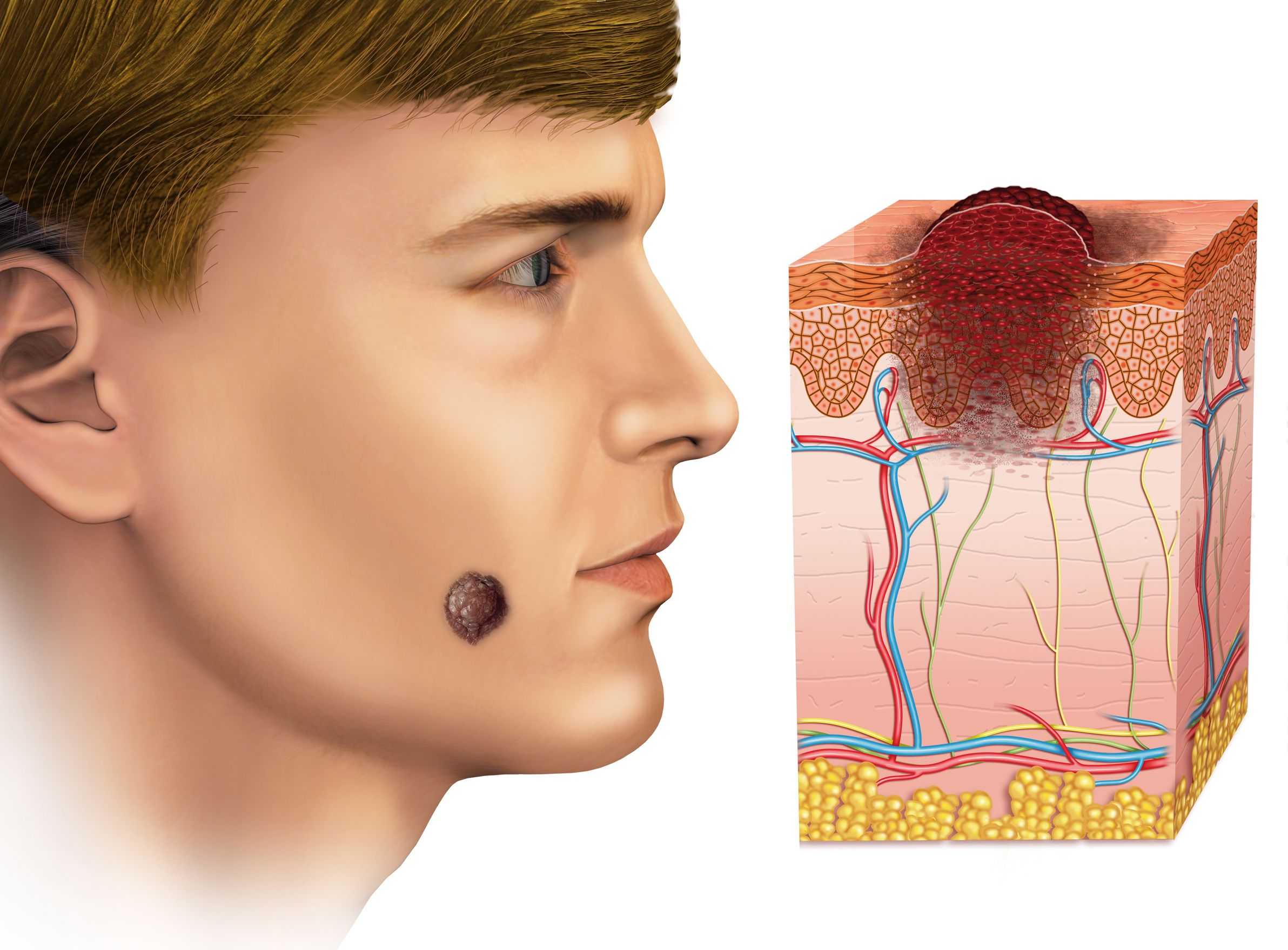What is Melanoma
Melanoma is a type of skin cancer. Like other cancers, melanomas start when a particular cell or group of cells in your body begins to grow in an uncontrolled and dangerous way so they can invade surrounding tissues and potentially spread to other parts of the body. This happens when the DNA in a cell mutates so an abnormal cancerous clone of cells are produced. Most melanomas begin in a part of the skin called the dermal-epidermal junction, which is located between the epidermis and the dermis of the skin. As melanomas grow, they produce more cancer cells and invade deeper into the skin; they can potentially then invade the local tissues and spread (metastasize) to other organs in the body. However, when melanomas are detected soon after they begin, the chances that the cancerous cells can be removed completely before metastasizing are very high. This means that a melanoma that is diagnosed in its early stages has a high chance of being completely cured.


WHAT DOES A MELANOMA LOOK LIKE ON YOUR SKIN?
Melanomas either start in a mole that is already present on your skin or can begin as a new spot on your skin. Melanomas may be only the size of a pinhead when they begin and grow larger and deeper with time.
Click here to see the “ABCDE” signs of melanomas.
Other Kinds Of Melanomas

Ocular Melanoma
Ocular melanoma (melanoma in or around the eye) is a type of cancer that develops in the cells that produce pigment. Pigment is the substance that gives color to your skin, hair and eyes. Just as you can develop melanoma on your skin, you can also develop it inside your eye or on your conjunctiva. Although it is the most common eye cancer in adults, ocular melanoma is very rare.
Ocular melanomas usually begin in the middle of the three layers of your eye. The outer layer of your eye is the sclera. The innermost layer is the retina. The middle layer between the sclera and retina is called the uvea.
Rarely, eye melanoma can also occur on the conjunctiva.
Because most eye melanomas form in the part of the eye you can’t see when looking in a mirror, they can be difficult to detect. Also, eye melanoma typically doesn’t cause early signs or symptoms. That’s why it is so important to see your ophthalmologist regularly.
Acral lentiginous melanoma (ALM)
Acral lentiginous melanoma (ALM) is a specific type of melanoma that appears on the palms of the hands, the soles of the feet, or under the nails. Melanocytes contain your skin color (known as melanin or pigment). In this type of melanoma, the word “acral” refers to the occurrence of the melanoma on the palms or soles.


